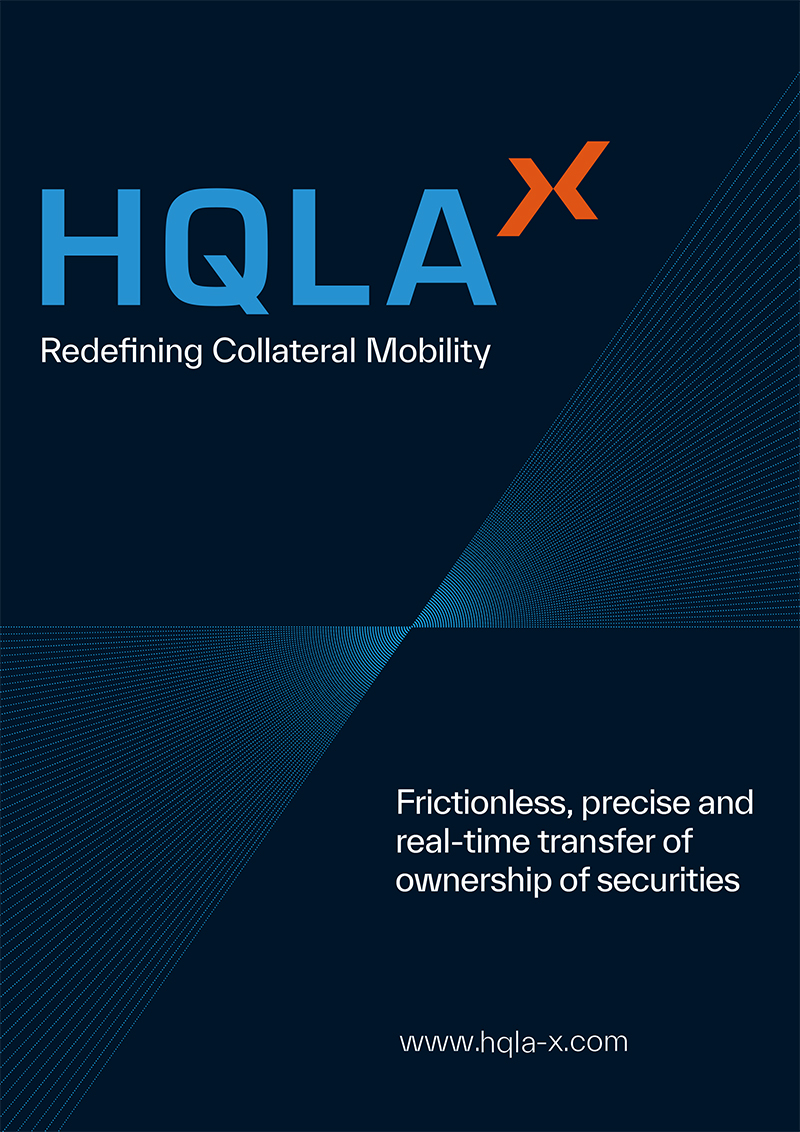Securities lending CCP services: redesigning the model
16 August 2022
Matt Wolfe, executive director, clearing systems at OCC, explains the evolution of the company’s CCP services for stock loan transactions and the benefits anticipated from DLT-based upgrades to its Market Loan Program
 Image: Matt Wolfe
Image: Matt Wolfe
For nearly 30 years, OCC has worked with clearing members and the US equities depository to increase the operational efficiency of the stock loan system. As part of our technology transformation, OCC’s new clearing platform plans to enable a range of automation and provide new ways for transactions to be cleared with greater transparency and ease.
OCC operates two stock loan programmes in which it acts as a central counterparty (CCP) for stock loan transactions. The first is the Stock Loan/Hedge Program (formerly ‘Hedge’), which was introduced in July 1993 to allow clearing members to use borrowed and loaned securities to reduce OCC margin requirements by reflecting the real risks of their intermarket hedged positions. Transactions are initiated directly between clearing members on a bilateral basis (i.e. broker-to-broker model). The second is the Market Loan Program, through which OCC processes and maintains stock loan positions that originated through a loan market. Transactions are initiated on either a bilateral basis or anonymously through a multilateral loan market (i.e. the market model of matching bids and offers).
Both programmes rely on the US equities depository to facilitate the settlement of equity securities and cash collateral between members. Once validated and settled, OCC novates each transaction and maintains and margins each loan, with the daily mark-to-markets moving through its settlement system. In addition, OCC provides post-transaction reporting capabilities including real-time reporting of executed transactions, stock and cash movements through the US equities depository, as well as record keeping and reporting via industry standard formats. Additional key benefits include counterparty disintermediation, expanded credit and trading allowances for cleared activity, regulatory capital savings of approximately 95 per cent compared to uncleared stock loans, margin offsets, and automation and streamlined operations.
Transaction volume and average notional value of loans at OCC grew significantly in 2021. There were nearly 1.9 million annual new loan transactions, a 38 per cent increase over 2020, and average daily loan value at year-end grew 65 per cent at US$125 billion. Our current system has handled this steady increase in both volume and notional values extraordinarily well. However, the new system will offer even greater flexibility and resilience for the future.
When the new platform launches, OCC will continue to support both the Hedge Program and the Market Loan Program. We plan to introduce changes and enhancements to the transaction workflows for both programmes intended to improve reconciliation ability, reduce operational processing and costs, and track and improve the completeness of records in real-time. We aim also to expand OCC’s guarantee and further reduce counterparty credit risk, while providing balance sheet savings through the netting of cash flows.
Currently, in the case of Hedge, when the lender and borrower have negotiated the loan the details are sent to the depository. Following the delivery-versus-payment confirmation, OCC records and guarantees a loan between the lender and the borrower. The delivery confirmation of the current system does not include the terms of the loan (e.g. the dividend rate, the rebate rate, any term structure, etc.). This creates gaps in what OCC can guarantee, causing the lender and borrower to have some residual bilateral credit exposure. The lack of information is also a barrier to expanding clearing services such as supporting non-cash collateralised loans.
Under the new programme, OCC will have the full contract details, enabling OCC to expand its guarantee of Hedge Program transactions. An example of this improvement is that OCC will be able to maintain rebate rates and calculate accrued interest. The accrued rebate amounts will be settled on a net basis with OCC, replacing the current process of creating payment orders for every counterparty. Having full visibility into the contract details enables OCC to expand the products and services that it offers over time.
The Hedge Program will eventually be decommissioned and clearing members will migrate to a single enhanced Market Loan Program which will handle stock loans that are either bilaterally negotiated or matched through a Loan Market. To support this enhanced Market Loan Program, OCC is utilising Axoni’s distributed ledger technology (DLT) platform, AxCore, which is slated to be hosted in the cloud pending regulatory approval. Later this year, OCC will release technical specifications, sample data and layouts for the new platform, and testing is scheduled to begin in 2023.
Shared distributed ledger
Since we needed to replace the current system, we believe this is a good opportunity to be forward looking and implement DLT because it allows programme participants to track a securities lending transaction throughout the entire lifecycle on a shared distributed ledger. This is important because it can help address issues that may result from reconciling individual books and records. Currently, OCC’s role is based upon creating daily files of information about transactions and contracts and then distributing those files through a variety of means to programme participants. To receive the files and compare the information to their internal books and records, programme participants need specialised systems to decrypt, unpack and load the required information into their internal systems.
OCC’s new Stock Loan system and programme are targeted at reducing operational costs and risk across market participants. The goal of implementing DLT is for both the lender and borrower to have a direct connection into a ledger and be able to see in real time what their positions are. In addition, users can stay connected to OCC and any relevant counterparties, confident that they are working off the same version of the contract as the counterparty. This means that, rather than waiting for a daily update, the state of a contract is visible in real-time throughout the day.
To summarise, market participants can look forward to the following enhancements as part of the new platform and programme:
• Reducing reconciliation processes: pre-matching of data and a shared ledger provides each party access to transactional data in a consistent, ordered, and synchronised format.
• Shared workflows: participants can process loans or post-trade activity in a consistent manner.
• Standardisation: harmonisation of data formats and business logic can streamline processes and result in greater standardisation.
• Open Innovation: open APIs with standard integration points enable the opportunity for greater innovation and ease of onboarding for new vendors, reference data providers, or borrowers and lenders.
• Auditability and transparency: participants that are not necessarily direct counterparties to the trade, but are required to manage risk or provide a service, can now gain full transparency into the gold record data (depending on level of permissioning). Agent lender disclosures and regulatory compliance (Reg SHO) can be done seamlessly and at lower cost via DLT.
• Real-time infrastructure: this eliminates the reliance on batch files and moves the industry from end-of-day to real-time reporting, with the ability to access data on-demand. This also increases transparency for internal risk management and more informed trading decisions.
Interested clearing members will have the option to adopt a node following the new platform launch. These nodes can be located in a data centre or in the cloud and allow users to customise the format, type and frequency of updates received.
It is important, however, to note that the new platform is not radically different from the current system, just more efficient at sending and receiving data. Clearing members can choose to maintain their current systems and standard messaging protocols, and our new platform will still be able to process and translate messages received in the existing information.
OCC operates two stock loan programmes in which it acts as a central counterparty (CCP) for stock loan transactions. The first is the Stock Loan/Hedge Program (formerly ‘Hedge’), which was introduced in July 1993 to allow clearing members to use borrowed and loaned securities to reduce OCC margin requirements by reflecting the real risks of their intermarket hedged positions. Transactions are initiated directly between clearing members on a bilateral basis (i.e. broker-to-broker model). The second is the Market Loan Program, through which OCC processes and maintains stock loan positions that originated through a loan market. Transactions are initiated on either a bilateral basis or anonymously through a multilateral loan market (i.e. the market model of matching bids and offers).
Both programmes rely on the US equities depository to facilitate the settlement of equity securities and cash collateral between members. Once validated and settled, OCC novates each transaction and maintains and margins each loan, with the daily mark-to-markets moving through its settlement system. In addition, OCC provides post-transaction reporting capabilities including real-time reporting of executed transactions, stock and cash movements through the US equities depository, as well as record keeping and reporting via industry standard formats. Additional key benefits include counterparty disintermediation, expanded credit and trading allowances for cleared activity, regulatory capital savings of approximately 95 per cent compared to uncleared stock loans, margin offsets, and automation and streamlined operations.
Transaction volume and average notional value of loans at OCC grew significantly in 2021. There were nearly 1.9 million annual new loan transactions, a 38 per cent increase over 2020, and average daily loan value at year-end grew 65 per cent at US$125 billion. Our current system has handled this steady increase in both volume and notional values extraordinarily well. However, the new system will offer even greater flexibility and resilience for the future.
When the new platform launches, OCC will continue to support both the Hedge Program and the Market Loan Program. We plan to introduce changes and enhancements to the transaction workflows for both programmes intended to improve reconciliation ability, reduce operational processing and costs, and track and improve the completeness of records in real-time. We aim also to expand OCC’s guarantee and further reduce counterparty credit risk, while providing balance sheet savings through the netting of cash flows.
Currently, in the case of Hedge, when the lender and borrower have negotiated the loan the details are sent to the depository. Following the delivery-versus-payment confirmation, OCC records and guarantees a loan between the lender and the borrower. The delivery confirmation of the current system does not include the terms of the loan (e.g. the dividend rate, the rebate rate, any term structure, etc.). This creates gaps in what OCC can guarantee, causing the lender and borrower to have some residual bilateral credit exposure. The lack of information is also a barrier to expanding clearing services such as supporting non-cash collateralised loans.
Under the new programme, OCC will have the full contract details, enabling OCC to expand its guarantee of Hedge Program transactions. An example of this improvement is that OCC will be able to maintain rebate rates and calculate accrued interest. The accrued rebate amounts will be settled on a net basis with OCC, replacing the current process of creating payment orders for every counterparty. Having full visibility into the contract details enables OCC to expand the products and services that it offers over time.
The Hedge Program will eventually be decommissioned and clearing members will migrate to a single enhanced Market Loan Program which will handle stock loans that are either bilaterally negotiated or matched through a Loan Market. To support this enhanced Market Loan Program, OCC is utilising Axoni’s distributed ledger technology (DLT) platform, AxCore, which is slated to be hosted in the cloud pending regulatory approval. Later this year, OCC will release technical specifications, sample data and layouts for the new platform, and testing is scheduled to begin in 2023.
Shared distributed ledger
Since we needed to replace the current system, we believe this is a good opportunity to be forward looking and implement DLT because it allows programme participants to track a securities lending transaction throughout the entire lifecycle on a shared distributed ledger. This is important because it can help address issues that may result from reconciling individual books and records. Currently, OCC’s role is based upon creating daily files of information about transactions and contracts and then distributing those files through a variety of means to programme participants. To receive the files and compare the information to their internal books and records, programme participants need specialised systems to decrypt, unpack and load the required information into their internal systems.
OCC’s new Stock Loan system and programme are targeted at reducing operational costs and risk across market participants. The goal of implementing DLT is for both the lender and borrower to have a direct connection into a ledger and be able to see in real time what their positions are. In addition, users can stay connected to OCC and any relevant counterparties, confident that they are working off the same version of the contract as the counterparty. This means that, rather than waiting for a daily update, the state of a contract is visible in real-time throughout the day.
To summarise, market participants can look forward to the following enhancements as part of the new platform and programme:
• Reducing reconciliation processes: pre-matching of data and a shared ledger provides each party access to transactional data in a consistent, ordered, and synchronised format.
• Shared workflows: participants can process loans or post-trade activity in a consistent manner.
• Standardisation: harmonisation of data formats and business logic can streamline processes and result in greater standardisation.
• Open Innovation: open APIs with standard integration points enable the opportunity for greater innovation and ease of onboarding for new vendors, reference data providers, or borrowers and lenders.
• Auditability and transparency: participants that are not necessarily direct counterparties to the trade, but are required to manage risk or provide a service, can now gain full transparency into the gold record data (depending on level of permissioning). Agent lender disclosures and regulatory compliance (Reg SHO) can be done seamlessly and at lower cost via DLT.
• Real-time infrastructure: this eliminates the reliance on batch files and moves the industry from end-of-day to real-time reporting, with the ability to access data on-demand. This also increases transparency for internal risk management and more informed trading decisions.
Interested clearing members will have the option to adopt a node following the new platform launch. These nodes can be located in a data centre or in the cloud and allow users to customise the format, type and frequency of updates received.
It is important, however, to note that the new platform is not radically different from the current system, just more efficient at sending and receiving data. Clearing members can choose to maintain their current systems and standard messaging protocols, and our new platform will still be able to process and translate messages received in the existing information.
NO FEE, NO RISK
100% ON RETURNS If you invest in only one securities finance news source this year, make sure it is your free subscription to Securities Finance Times
100% ON RETURNS If you invest in only one securities finance news source this year, make sure it is your free subscription to Securities Finance Times



